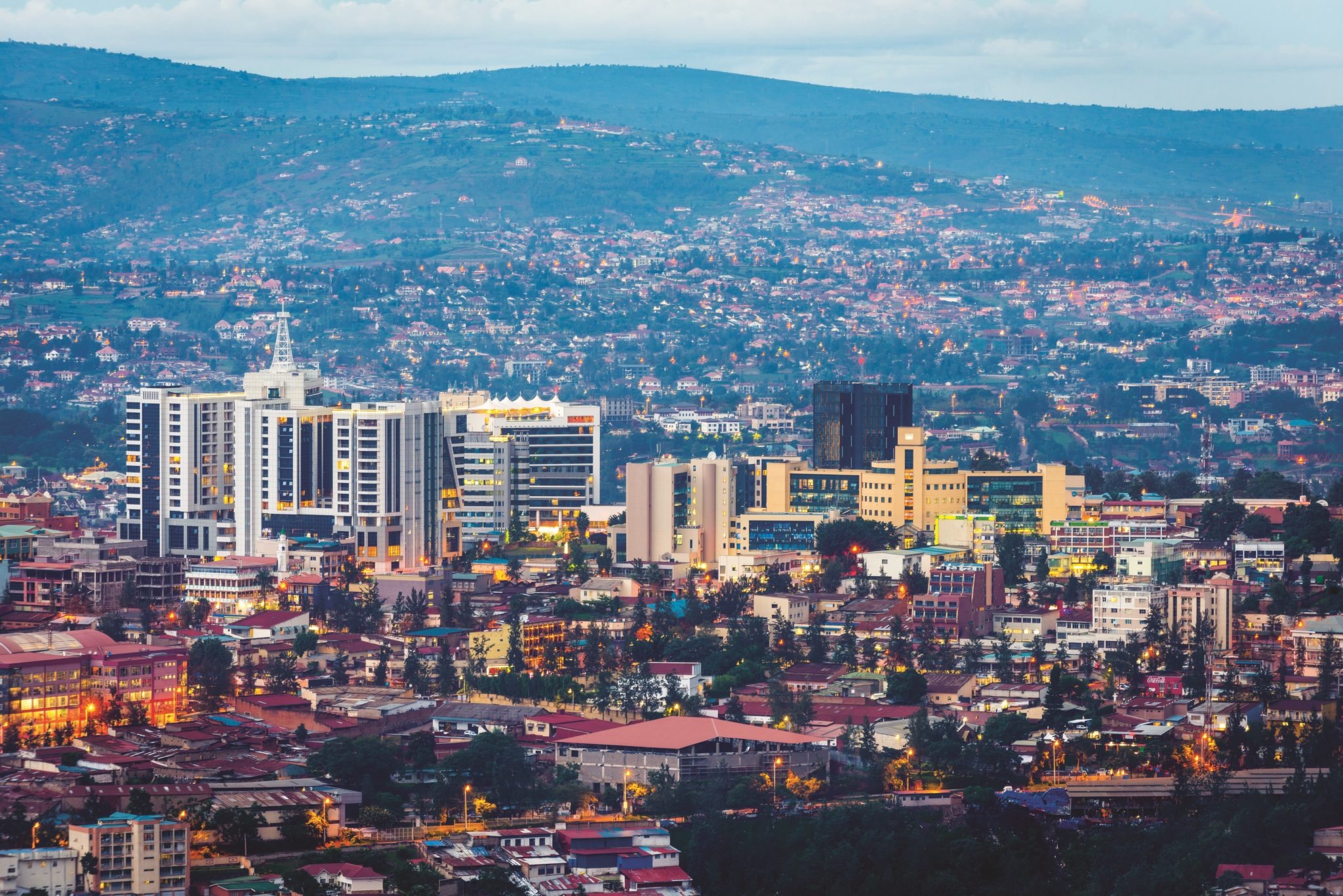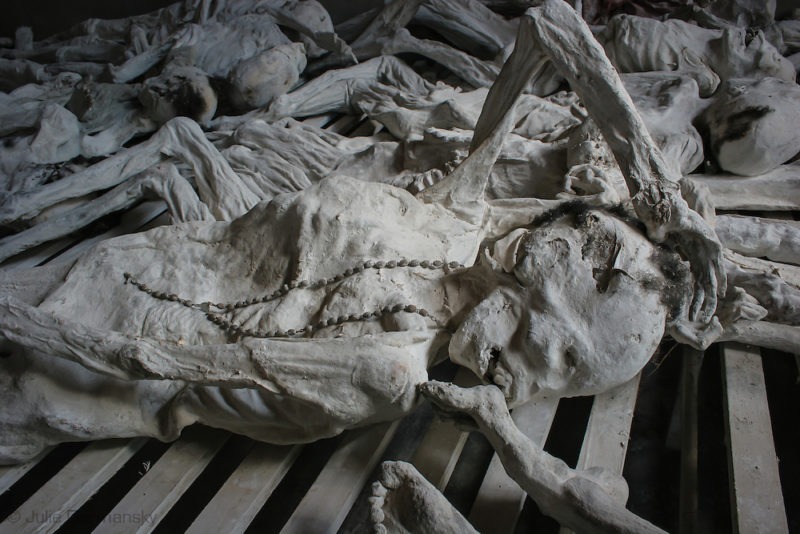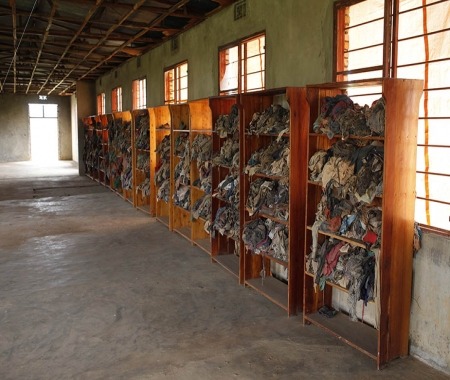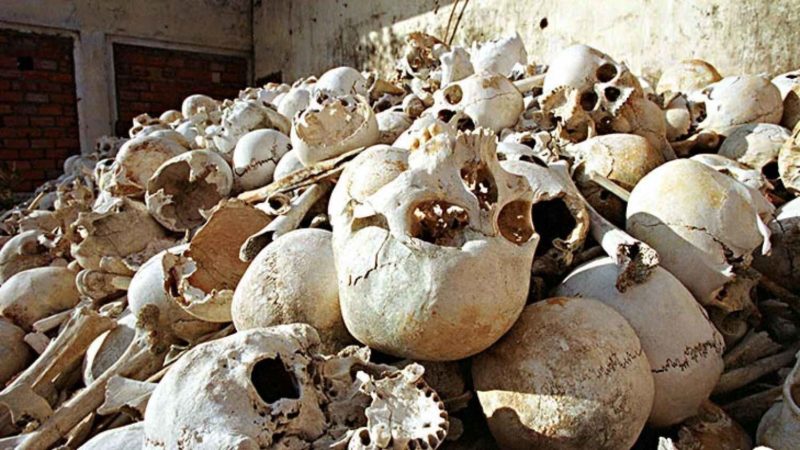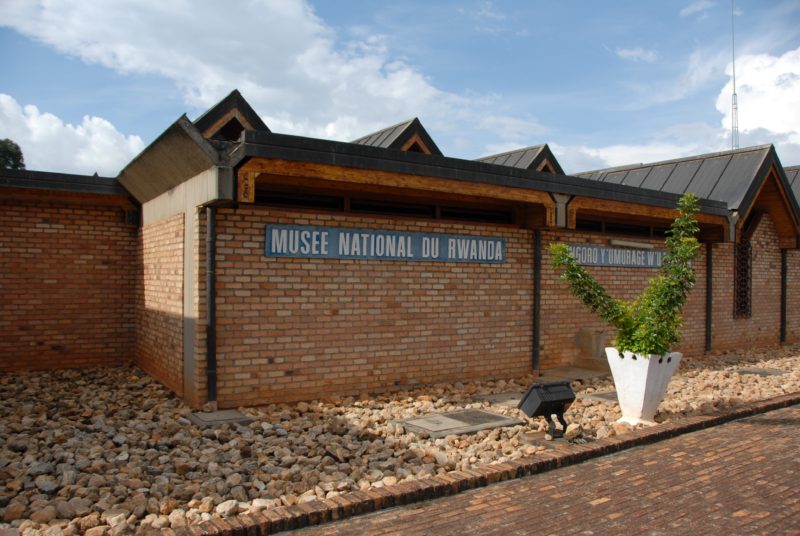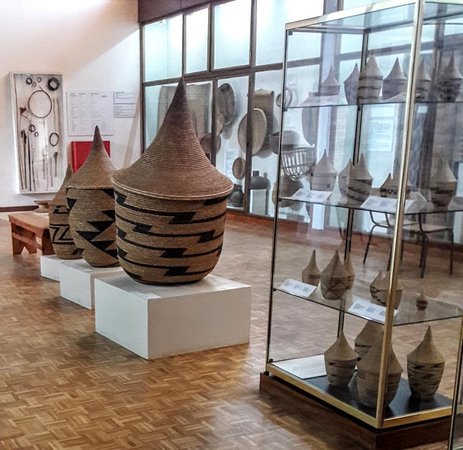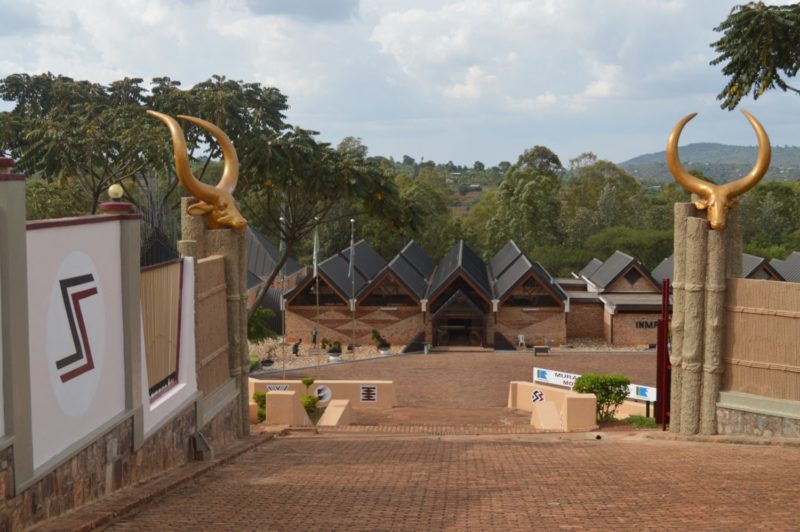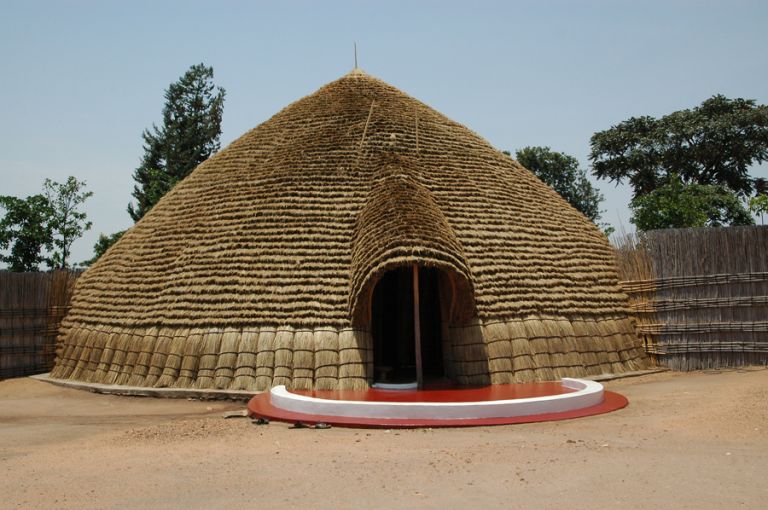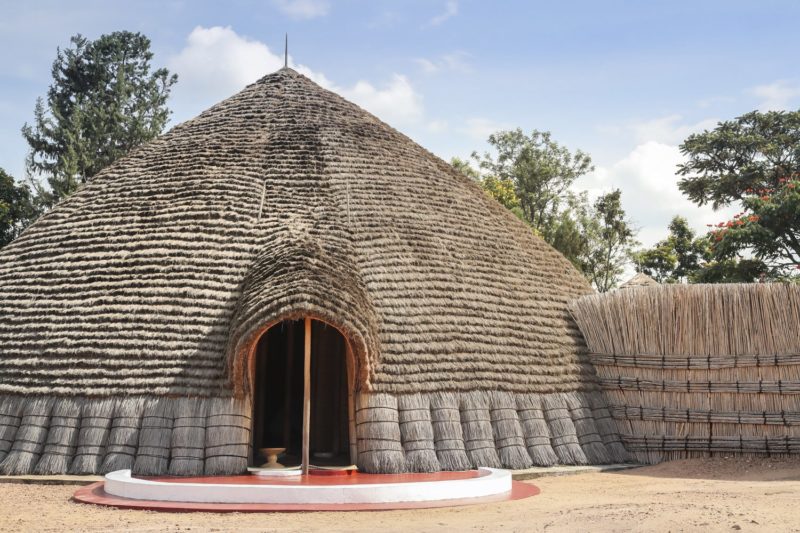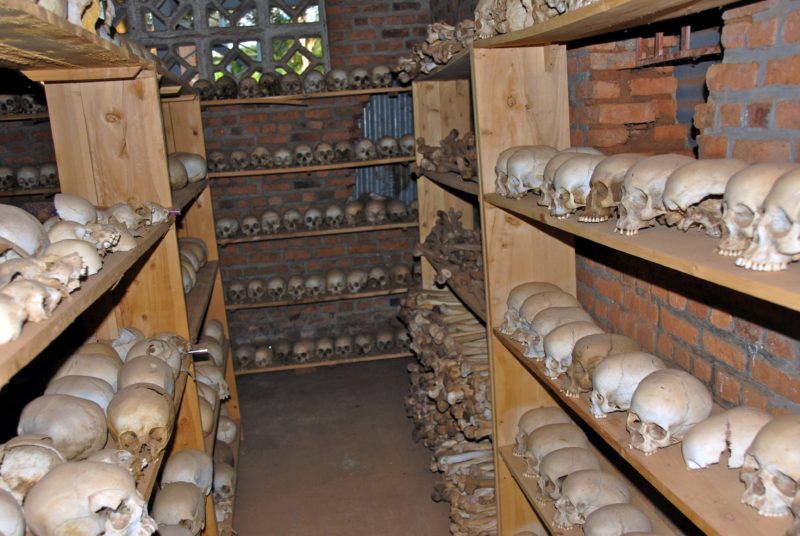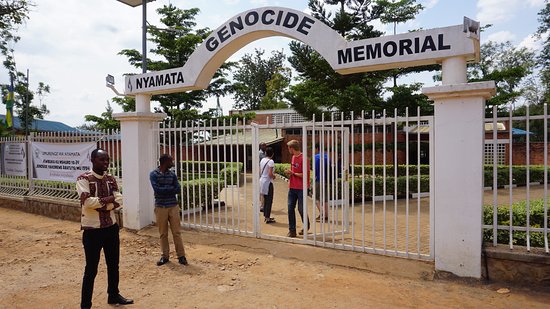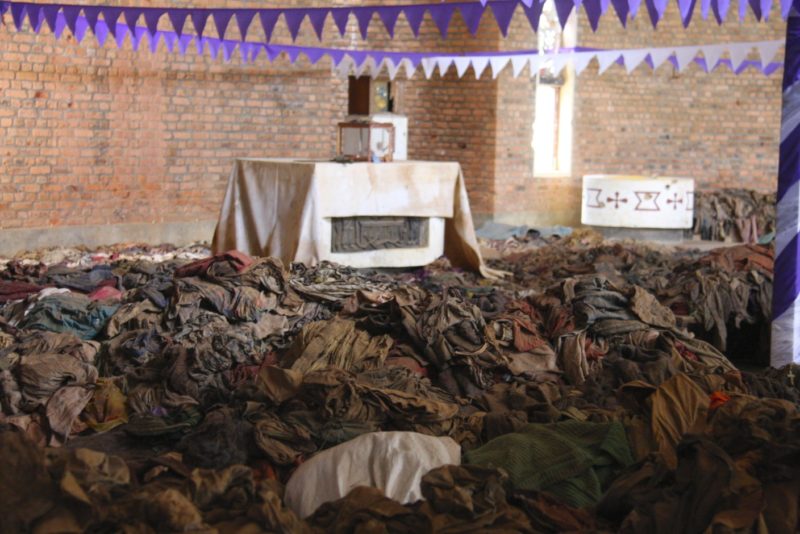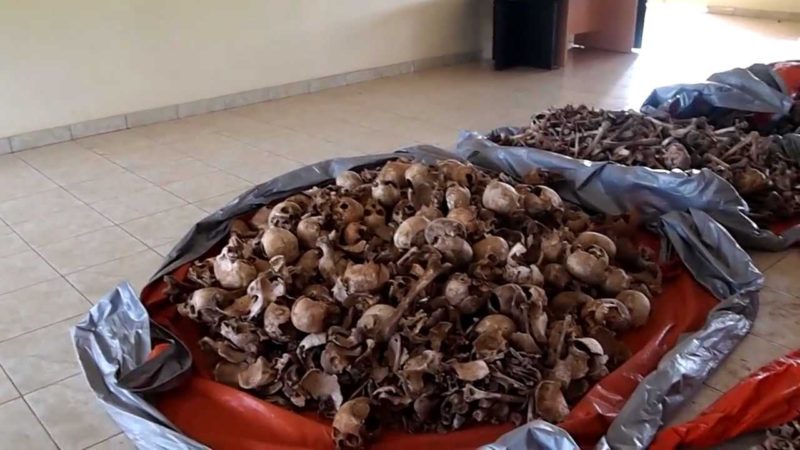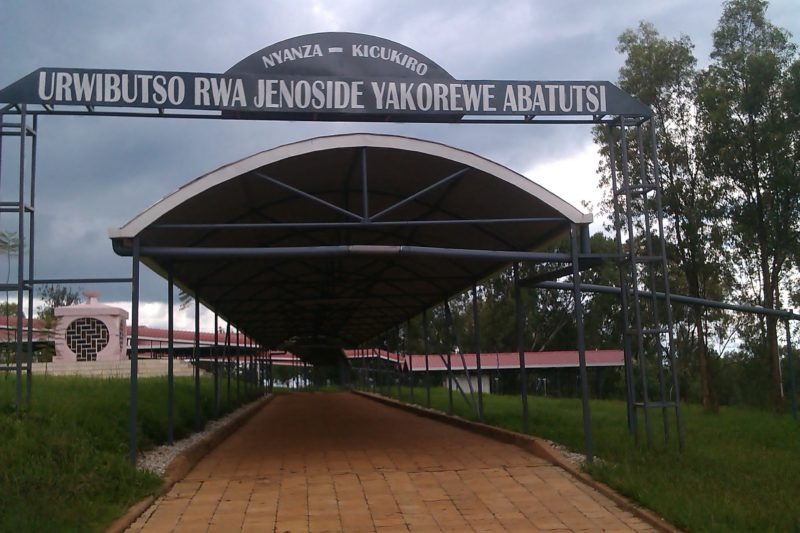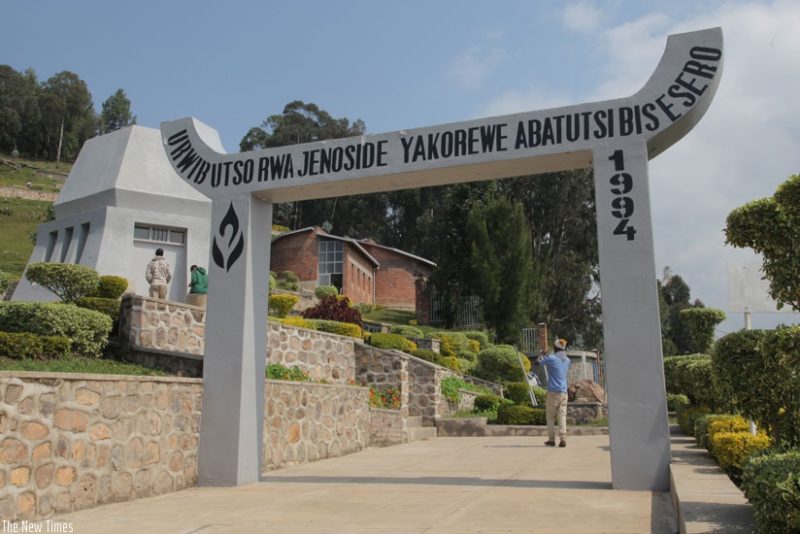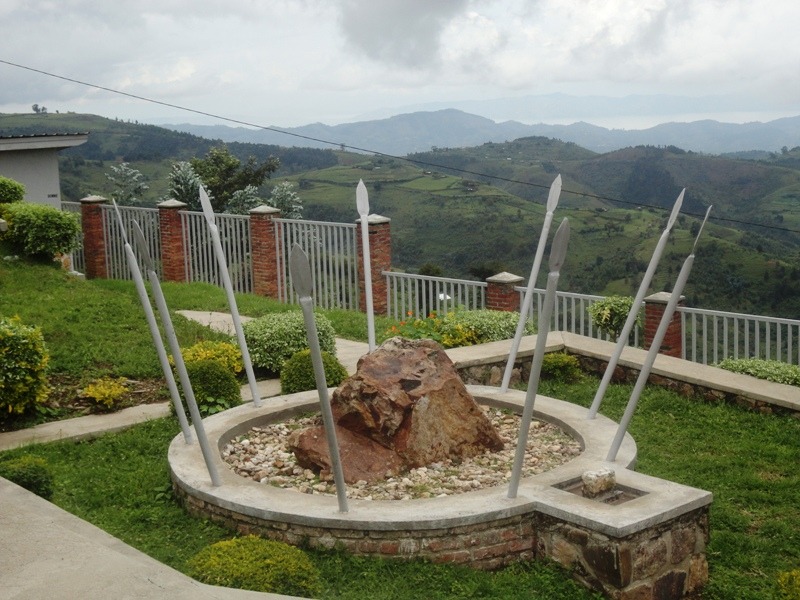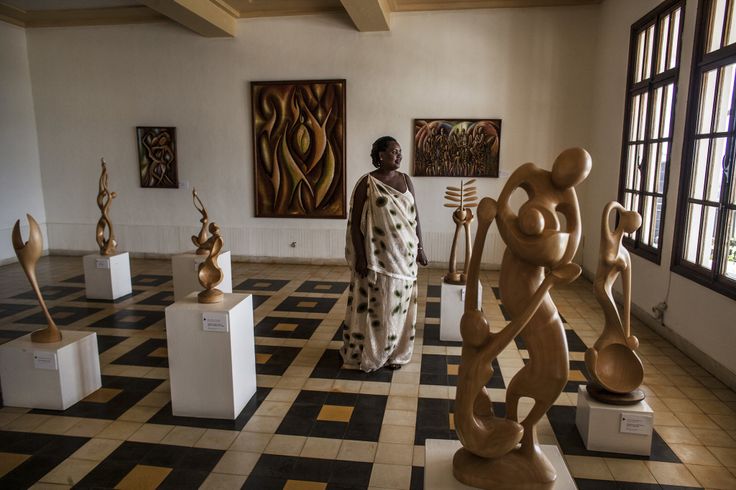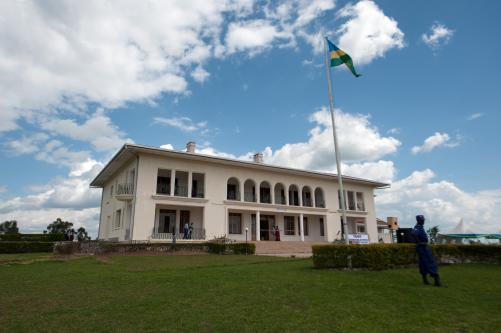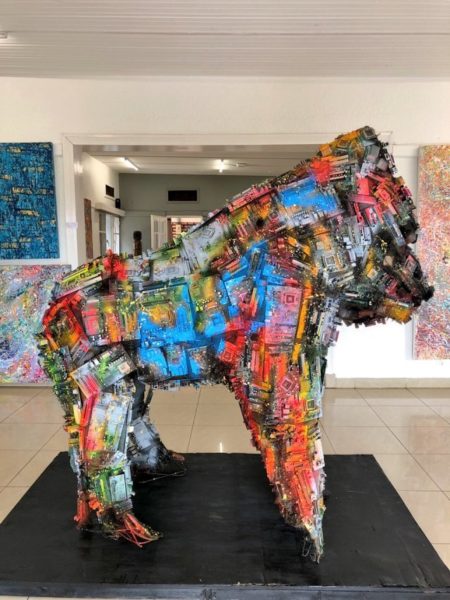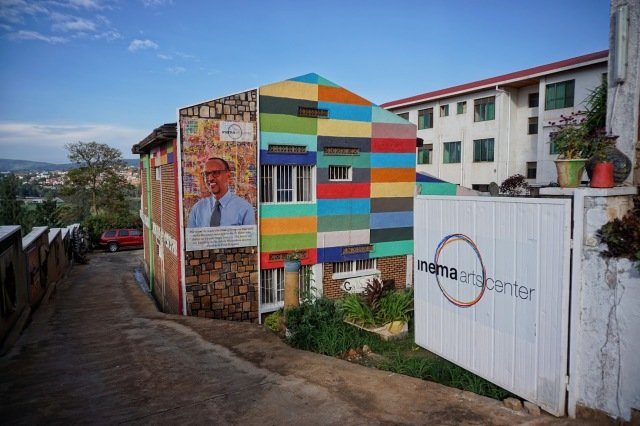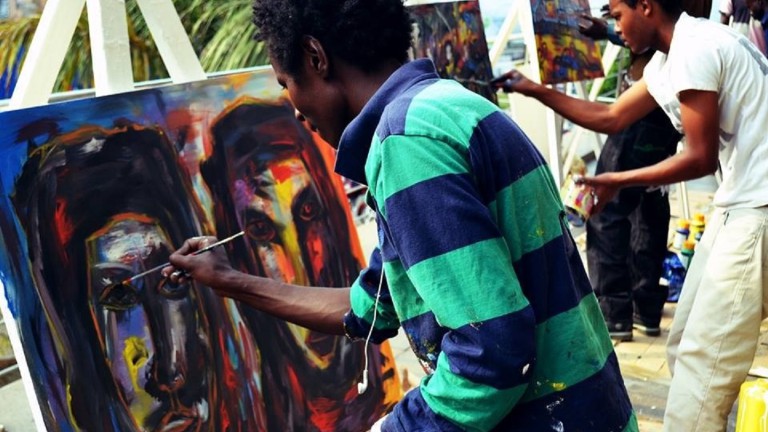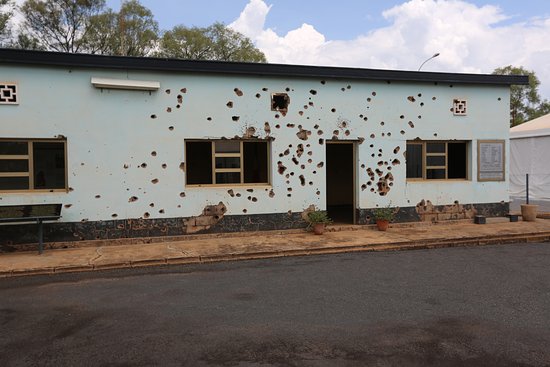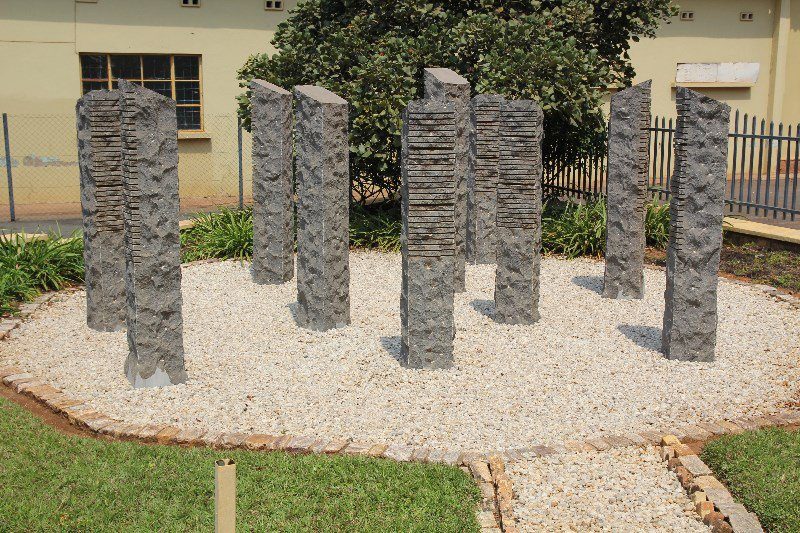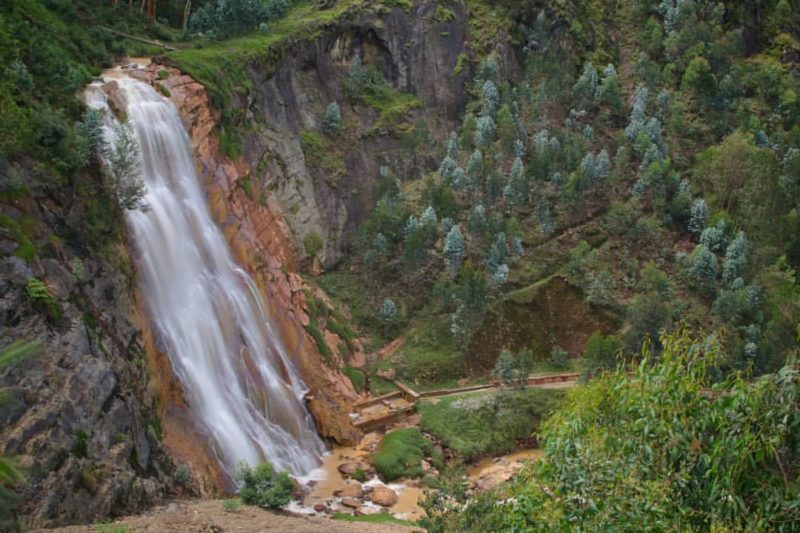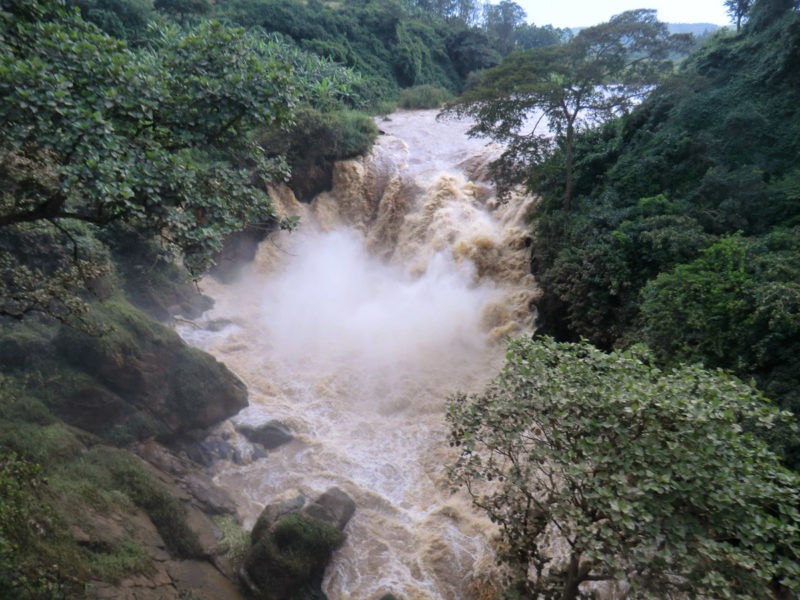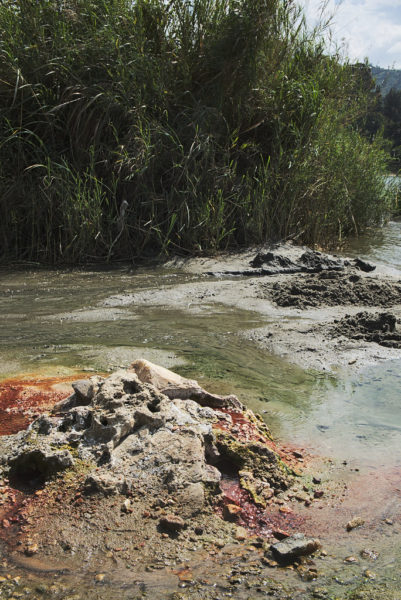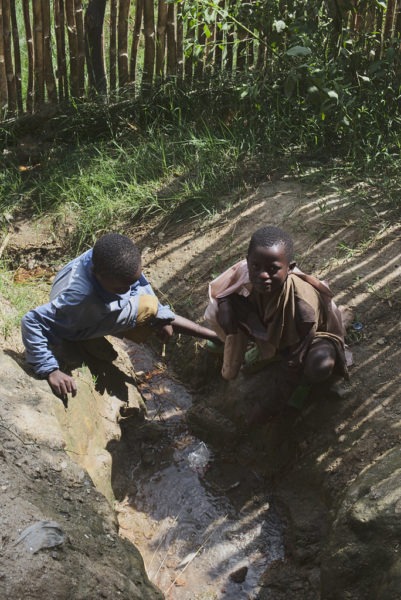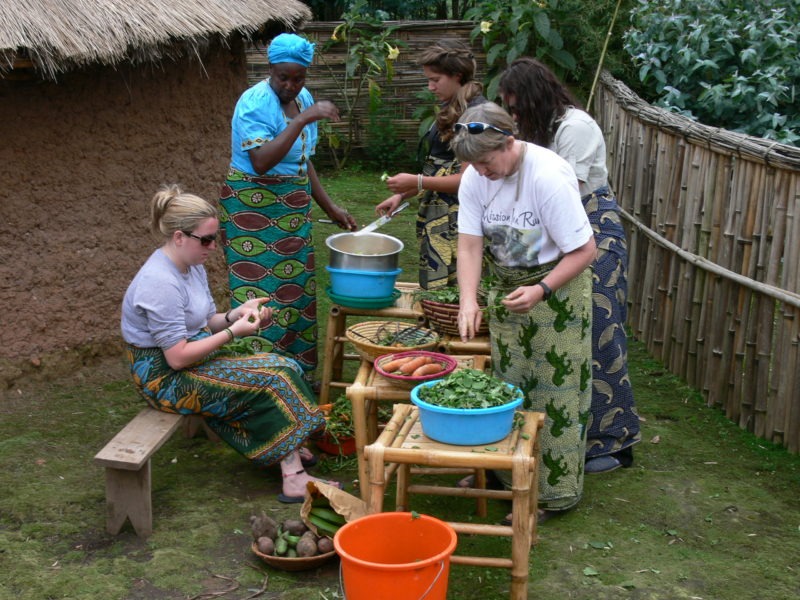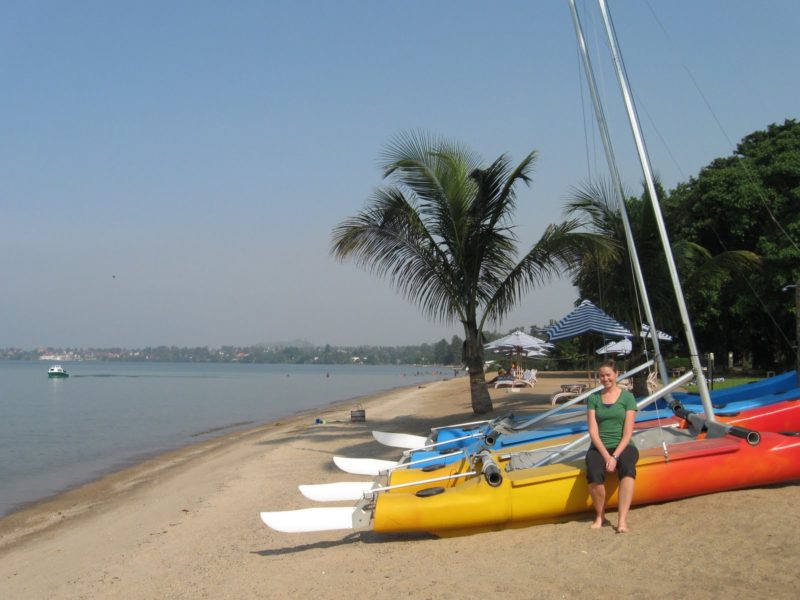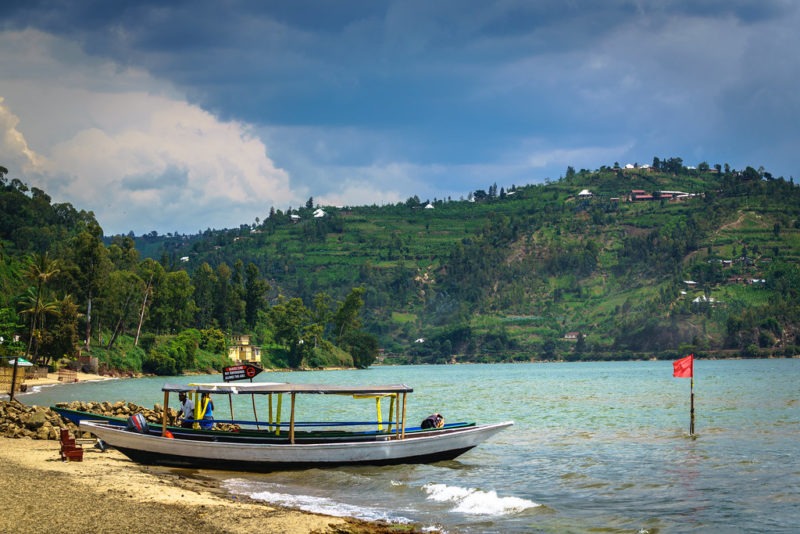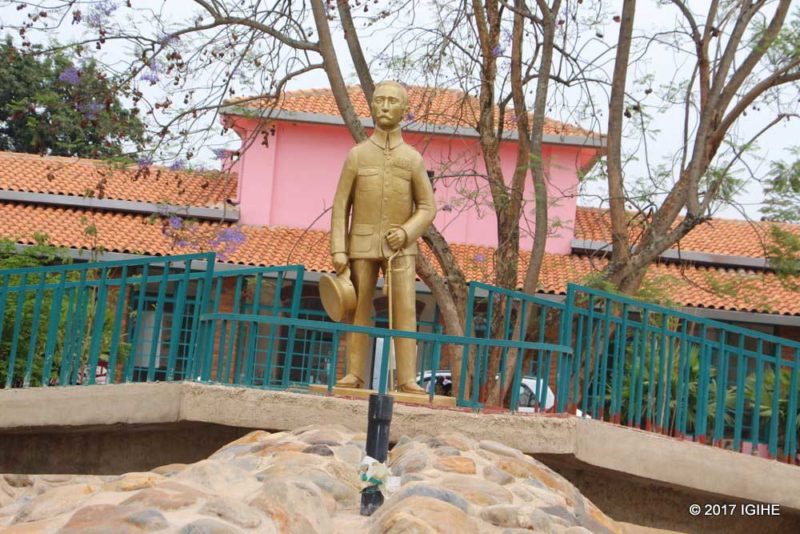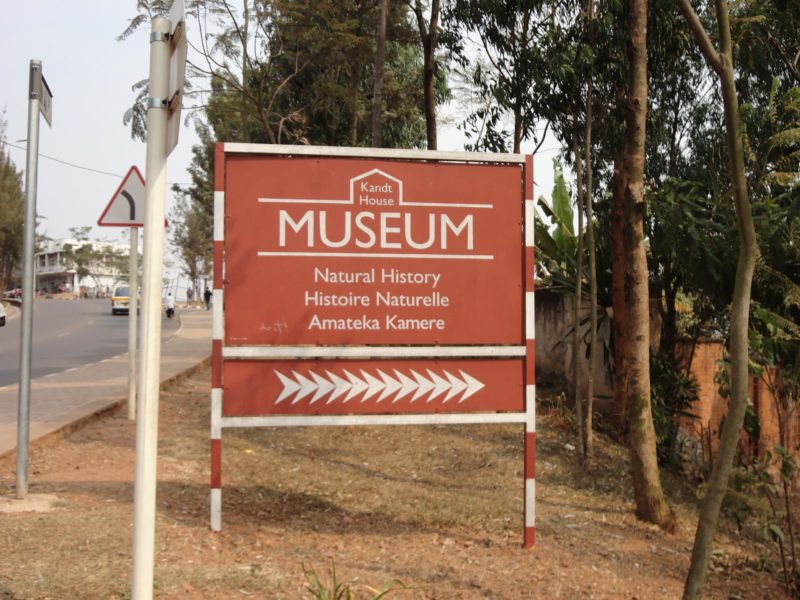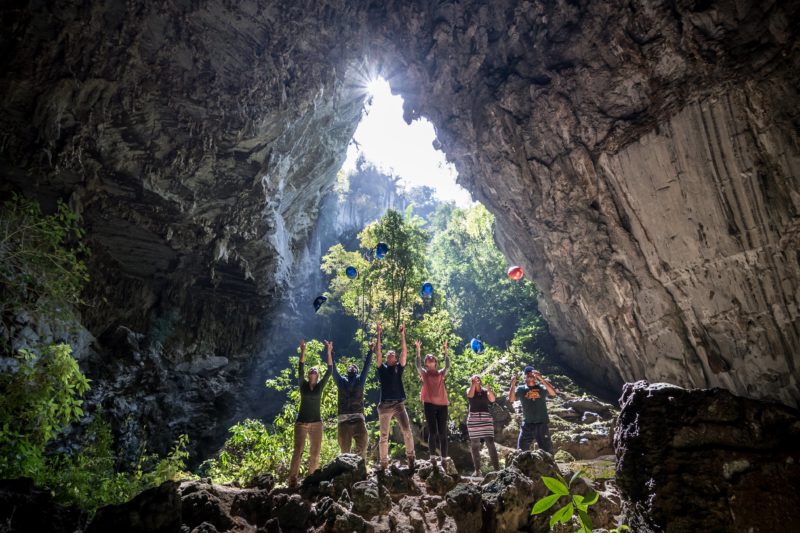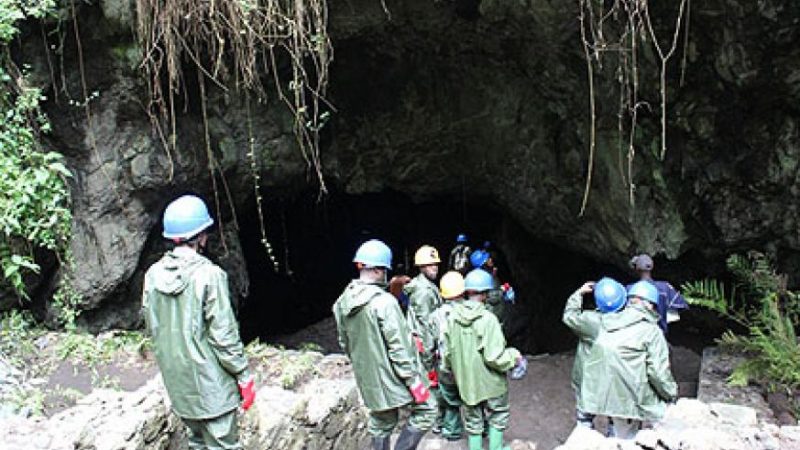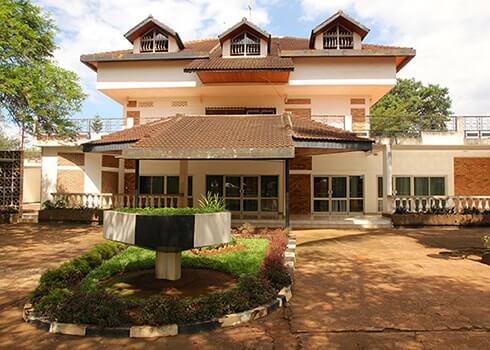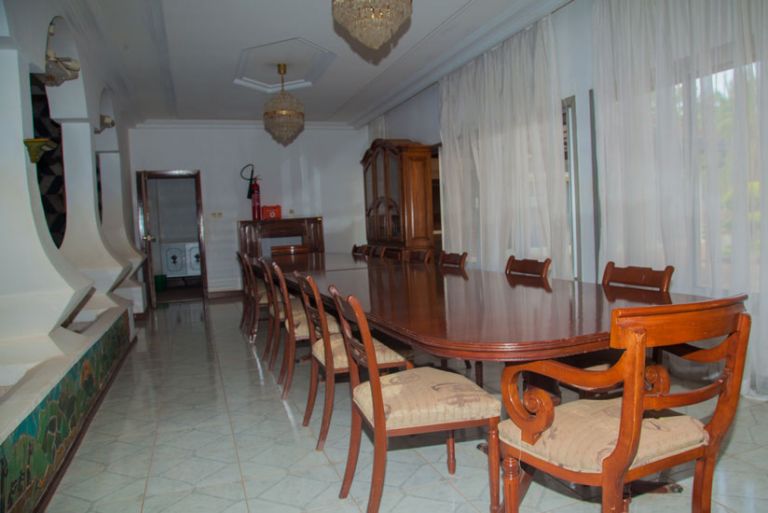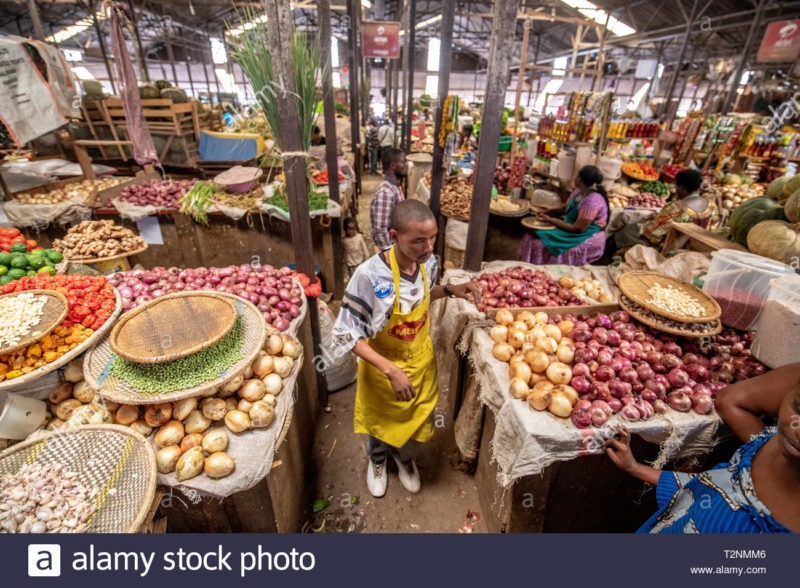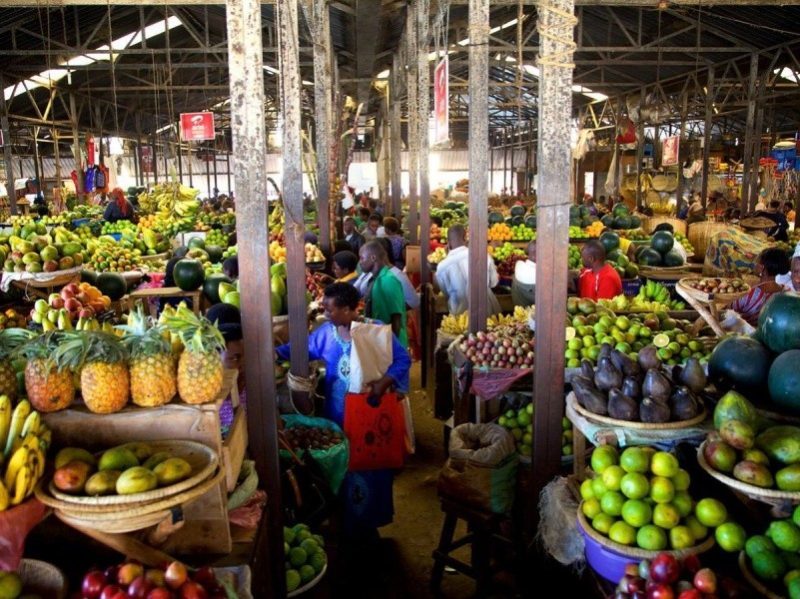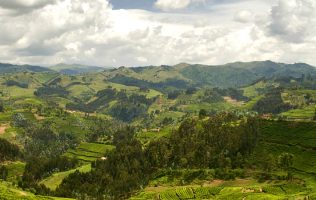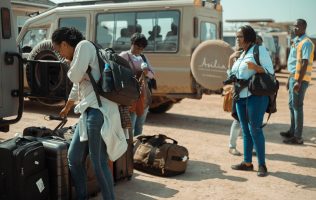- Murambi genocide memorial.
Location; Huye
Murambi town was formerly called Gikongoro located in southern Rwanda, the memorial is 2km beyond the town of Murambi. the town was the site of one of the most unforgettable horrors of the 1994 genocide. Refugees flocked to Murambi after being told they would be safe there. It is estimated that a total of 27,000 to 40000 people were murdered and 34 people survived. This is by far the most graphic of the many genocide memorials in Rwanda, as hundreds of bodies have been exhumed and preserved with powdered lime and appear as they did when the killers struck.
You will walk through rooms with larger than life photographs of some of the victims and accounts from some of the few survivors of the genocide. heading outside, you will pass by some mass graves over what were once planned to be classrooms. Wondering through these rooms the scene becomes more and more macabre with many of the displayed corpses. Men, women and children still contorted in the manner in which they died. The last rooms are perhaps the most moving in which they died. The last rooms are perhaps the most moving of all, these contain the toddlers and babies and just as with the adults, you can sometimes get a guess as to their final moments; some presumably calling for their mothers, are still holding their arms out, another covers his or her eyes in what might be a vain attempt to hide from the killers. Many others have fractures in their skulls from the machetes. However, Murambi can be overwhelming and not everyone can stomach it. though it is another poignant reminder to u all of what came to pass here and why it must never be allowed to happen again.

Mummified bodies on display at the Murambi Genocide Memorial Centre, at the site of the former Murambi Technical School where some 45,000 Tutsi were murdered during the Rwandan Genocide. 

- The Ethnographic museum
Location; Butare
This museum was constructed in the late 1990s and is a famous place for the death of Queen Dowager Rosalie Gicanda the wife to the Rwandan king Mwami who was killed during the genocide on 20th April 1994 and was given as a gift from Belgium’s king Badouin in the late 1980s, the ethnographic museum now houses one of Africa’s finest ethnographic collections. Located 35kms drive from Kigali city center, here you will get to learn about the geopolitics of Rwanda and it is the main and largest museum in Rwanda. Seven galleries display historical, ethnographic, artistic and archaeological artefacts accompanied by visual aids giving visitors a rich insight into the Rwandan culture. The exhibits open with geographical and geological displays moving on to items used in hunting, agriculture, animal husbandry, pottery, weaving and woodwork. Traditional clothing and architectural methods are also illustrated as well as the social importance of cattle. Descendants of the royal herd can be seen to this day and the king’s palace in nearby Nyanza. then the final room reveals the traditional customs and beliefs, history, culture, poetry and oral tradition and cosmology.
- King palace museum
Location; Nyanza road
The king’s palace is located 88kms south of Kigali capital, it was a residence to king Mutara III Rudahingwa. The palace offers a glimpse into Rwandan traditional seat of their monarchy, it was restored in the 19th century. With the construction of the traditional royal residence, the king’s palace is a beautifully crafted thatched dwelling shaped like a beehive.in the old times Nyanza was the heart of Rwanda according to the oral tradition, it was the site of battles and power struggles. For a long time, the monarchy was mobile, moving the court between various locations. When it eventually settled in one place, Nyanza was the choice of settlement. The capital of the kingdom had as many as 2,000 inhabitants and huts were traditionally built with the same structure and design. Recently the long horned traditional cows, Inyambo were also introduced for cows’ makeup most of the Rwandan culture. You can also visit the burial ground of King mutara III and his wife queen Rosalie gicanda.
- Ntarama genocide memorial
Location; Kigali city
Ntarama is one of the 6 national genocide memorial sites contains human clothing’s, remains and artefact which belong to those who were at the church. These items have remained at display all times. Ntarama is a small church and school which is 25km south of kigali.it is estimated with a total of 5000 people who were killed from this place, most of them were children and women. All the people who were hiding in the kitchen building were burned to death and the children were brought together in one school room and killed by smashing their skulls against the wall. The wall up to now stained with red blood from the excusion.the women were raped by these merciless people most of whom were HIV positive before being killed as well as inserting sharp pointed sticks in their virginas until these sticks came out from the head. All the blood stained clothes of the victims and instruments used in the executions are all grouped at the front of the church. The church also houses all the skulls and many other bones of the victims. This church was converted into a genocide memorial on 14th April 1995 and was dedicated to over 5000 people who lost their lives in this place. During the genocide the Tutsi persecuted much of the population who sought sanctuary in the catholic churches believing that they would be protected and safe there. And it’s the church leaders who informed the Hutus of the secrets mass of Tutsi who were in the churches and the Hutus stormed the churches and killed the people. In Nyamata Paris catholic church I were grenades, automatic weapons as well as rocket were operated from and these were used to kill the people imprisoned inside the church. it’s believed that over 1000 people were killed inside the church with another 35000 who were killed around the church compound between April 10th and 12th of 1994.the underground crypt besides the church is filled with thousands of skulls, femurs as well as bones belonging to 45000 people that were murdered. There are also wooden coffins which are filled with bones of whole families draped in purple covers.
- Nyamata genocide memorial
Location; bugesera
The Nyamata church genocide memorial is situated I the bugesera region approximately 35kms from the capital of Kigali. Nyamata and the surrounding region suffered some of the most extensive devastation in from the 1994 genocide attacks against the Tutsi. This site is a church where around 2500 people were killed and it has become emblematic of the barbaric treatment of women during the genocide. Many residents of the region gathered in Nyamata and sought protection at the local catholic church. The church compound tended to by priests and nuns, provided a haven for the frightened masses that flocked to the compound hoping to escape death. The church was thought of as a place of refuge and of sanctuary where the militia would not dare to attack.
Unfortunately, this was not the case,10000 civilians were killed in and around the catholic church compound on 10th April 1994.people gathered in the church and padlocked the iron door that safeguarded the entrance as the killers approached. The members of the “interahamwe” the Hutu militia ad the Rwandese government forces forced the door open using sledges, hammers to break open holes in the wall through which grenades were thrown into the church causing death and stunning those trapped inside. They massacred women, men and children hiding inside the church using machetes, clubs and local farming tools and also went on to kill those in the surrounding area.
Inside the church, the bricks walls show several gaping holes. The victims inside had locked the doors to prevent the militia and soldiers from entering the church, the ceiling is riddled with bullet holes and is still stained with blood. The remains have been removed from inside the church and placed in two mass graves located behind the church. But the clothing’s of the victims remain piled on the church pews as well as the church floor contains blood in certain places. Though the remains have been removed, bones still peek out the clothing, a rib here, a vertebra there, the altar cloth still covers the altar stained in blood.
- Nyanza genocide memorial
Location;
at the beginning of the genocide in April 1994, over 2000 Tutsi took refuge in ETO school on the outskirts of Kigali, protected by the united nations peace keeping force. Following the withdrawal of the UN, refugees were marched up the road to Nyanza where they were all butchered. Each year on April 11th a memorial ceremony takes place on the site where deserted refugees were murdered in cold blood.
Early in the morning of April 7, 1994, Tutsis began arriving at the École Technique Office (ETO) on the outskirts of Kigali in Kicukiro, seeking the protection of the 90 Belgian UN peacekeepers stationed there. At first, the Belgians said the people would have to leave by the next morning, but later the peacekeepers relented and let them stay on the school grounds. But when the Belgium withdrew its UN troops, the soldiers stationed at ETO left, abandoning at least 2,000 Rwandans at the school, including 400 children. The refugees pleaded with the soldiers not to leave them behind to certain death. Some even begged to be shot so they wouldn’t be hacked to death.
A little after one o’clock on the afternoon, the Belgians got into their jeeps and drove off. Some desperate Rwandans tried to block the convoy by lying down in the road, but the soldiers fired over their heads. Almost immediately after the Belgians left, Rwandan soldiers and militia entered the school grounds and proceeded to “take out the garbage.” They herded the refugees along a dirt road to a nearby place called Nyanza, which was a garbage dump, and were murdered.
- Bisesero genocide
Location; karongi kibuye
Bisesero is also known as the memorial of resistance during the 1994 genocide against the Tutsi’s between the month of May and June when the “interahamwe” came to carry out the massacres that sent over 40000 Tutsi’s dead.
This memorial is one of the 6 major genocide memorials in Rwanda. The genocide which begun in April 1994 claimed the lives of 40000 Rwandan Tutsi’s in the area of bisesero. unusually these people offered some defense and they appealed to French peacekeeping troops for assistance, the troops had no mandate to intervene and they withdrew from the carnage.
- National arts gallery
Location; Rwesero hill
The national art gallery of arts is located in the southern province Rwesero hill in Nyanza, formerly the royal capital of Rwanda from the 19th century up to 1961 when the kings had their palaces on a neighboring hill named Rukari, this gallery is Rwanda’s most prestigious art museum housed inside what was meant to be king mutara III Rudahigwa’s new palace (he died before the building was completed in somewhat mysterious circumstances after a routine vaccination went wrong). today it houses mostly contemporary paintings and stylistic sculptures on themes dealing with the genocide, unity and brotherhood. Bringing international contemporary art to the country and promoting current artists living and working in Rwanda, it’s a unique institution in the country.
Walking through the art gallery, the first thing that was the viewers’ attention is a line of busts, some tall, some short and all made of wood and clay. These heads. Each long face somewhat resembling the next, are sculptures of the last three kings of Rwanda.Yuhi V Musinga and his two sons mutara III Rudahingwa and his brother kigeli V. The sculptures are the result of the international sculpture workshop directed by Doctor Lillian Mary Nabulime, Peterson kamwathi and Madrad Bizimana and they are now on display in an exhibition titled “kingship and kinship” on the gallery’s main hall on the ground floor.
- Inema arts center
Location; kacyiru
Inema arts center was founded in 2012 by brother and self-taught painters Emmanuel Nkuranga and innocent Nkurunziza, Inema center spurs creativity for personal, social and economic growth. These two brothers started the art center in order to
Tap the untapped potential of art in Rwanda.
To use the creative expression as a way to bring the community and country alive.
Provide exposure to creative people and to create opportunities for Rwanda’s most underserved communities while using creativity for a productive livelihood.
Today the center has become a beacon in Rwanda for cultivating creative expression, it’s a collective of Rwandan creative artists.at its core Inema arts center provides space for 10 artists in residence to explore their creative talent specializing in contemporary African arts, crafts, music and dance. The artists produce paintings, sculptures and mixed media expressions showcased in the gallery at the center of arts. The center is also home to programmers, projects and initiatives that expand creative arts in Rwanda.inema arts center provides space to fuel creative expression through workshops, trainings and hands on classes.
- Camp Kigali memorial
Location; Kigali
When the UN mission for Rwanda (UNAMIR) was setup in 1993, the only first world nation willing to provide professional equipped soldiers for the peacekeeping effort was Belgium, of all countries. This was unfortunate in so far as Belgium was also the former colonial power in Rwanda, until independence was granted in1962.normally the UN avoids having personnel from former colonial countries involved in the relevant countries, in this case there wasn’t much choice, given the reluctance of all other developed nations to take part. The rest of the mission personnel was eventually comprised of Ghanaians, Tunisians, Bangladeshi and other nationals from developing countries. Obviously, Belgian soldiers present in Rwanda posed a certain risk for the overall atmosphere, and also for the Belgian troops themselves, since they could potentially be targets of aggression.
But what happened on the first day after the genocide broke out on 7th April 1994 however no so much rampaging mob aggression, but rather a very carefully calculated assassination for a very specific purpose. The plan did indeed work. Shortly after the calculated murder of the Belgian soldiers, the rest of their troops were in fact pulled out while at the same time all the western nations evacuated their expatriate residents from Rwanda, together with a sizeable proportion of the UN mission staff too.
When you get to the memorial you will notice at the center point of the actual memorial there features ten dark grey granite columns, one for each of the soldiers killed. A number of notches on the side indicates how old the respective soldiers were at the time of their death … most were in their twenties. Their initials are chiseled at the bottom, so you can match them against the memorial plaques on a nearby wall that lists their full names.
The rest of the wall of the same building is the starkest element of the site.it is pockmarked with shell and bullet holes. Inside, there’s another plaque with names, flanked by a Belgian and a Rwandan flag, next to a corner of the room where more shell/bullet scars on the wall and patches of a darker coloration indicate the place where some of the soldiers met their deaths.
There are two more rooms accessible, and a number of trilingual (French, Dutch, English) panels have been set up, giving a rough overview of various genocides world history has seen (though not all of the episodes listed here are universally classed as actual genocide), as well as some basic information.
- Les chutes des Ndaba
Location; kibuye
It’s about 25km from Kibuye along the road to Kigali, keep an eye out for this 100m-high waterfall. Buses usually slow down and helpful locals are quick to point it out.
- Rubona Penisula
Location; Gisenyi
Rubona Penisula is on the lake kivu lake shore about 4 km (2m) south of the central business district of Gisenyi, Rubavu district in the western province of Rwanda. The steep hills are populated by small homesteads with surrounding gardens. The lake shore is rocky in most areas with occasional sandy spots and places for swimming, especially on the weekend with a smattering of beach resorts. Rubona is also the location of a natural hot springs which locals use to boil potatoes and also its reported to cure variety of ailments.
It is common to see dozens of small fishing boats around the bay, a magical sight.it can be accessed by moto or boat.
- Gorilla guardian village
Location; Musanze
Gorilla guardian is a nonprofit umbrella organization that aims at improving the lives of reformed poachers and communities around Rwanda’s volcanoes national park through provision of conservation incentives supporting community enterprise development and livelihood based projects. Visiting the village means you will take part in village tours that will introduce you to several fascinating activities such as;
Taking part and enjoying the Intore traditional dance as well as popular songs of the Gorillas (referred as Ngayabatema). You will listen to the sweet melodies produced by the different traditional instruments such as African drums.
You will also undertake a guided community walks to visit some of the homesteads so as to experience the daily lives of the locals around Volcanoes National Park.
Tourists who visit the Gorilla Guardians village get the chance to see the King’s Palace replica with all the house interpretations and legends attached to the hidden cultural gem. Interestingly, you will be crowned the King for some time thus you will exercise the King’s powers as informed by the village elders during the organized ceremonies.
You will also learn about the local banana brewery process and also taste the local beer. Don’t leave this village without exploring the intricate Batwa pottery making skills, engagement and lessons. The walks will allow tourists to know more about the local people, the cultures as well as the general way of living.
Leaving the village without listening to some of the interesting stories about traditional/herbal medicine and also learning about the plants, trees and shrubs used for curing the patients is one of the greatest mistakes you shouldn’t make. Similarly, you will visit the traditional pharmacies and clinics to see some of the patients undergoing treatment.
- Gisenyi public beach
Location; Rubavu
Despite the fact that Rwanda is a land of a thousand hills and a land locked country, you can still enjoy those beach moments on the shores of Lake Kivu in Gisenyi. Here, even though the sand isn’t as white or the water as blue, it is our version of Miami. There are a variety of boat rides ranging from speed boats to canoes to a dual jet ski, whatever works for you.
- Museum of natural history
Location; Kigali city
The Natural History Museum in Kigali is Rwanda’s first and only museum dedicated to the natural sciences. It’s not as impressive as your average natural history museum, but visitors can still learn a lot about the country’s flora and fauna, geology and biological history.
Formerly known as the Kandt Residence, it was once the home of German physician and explorer Dr. Richard Kandt. It was Dr. Kandt who founded Kigali around 1908 to be a center of administration for German East Africa. The Institute of National Museums of Rwanda converted the historic residence into a museum in 2008 in order to increase Rwandans’ exposure to the natural sciences as well as to educate visitors from around the world about Rwanda’s biological and geological diversity.
- Dian Fossey gorilla fund international
Location; karisoke
The Dian Fossey gorilla fund international (originally the digit Fund) is a charity for the protection of endangered mountain gorilla. The digit fund was created by Dr. Dian Fossey in 1978 for the sole purpose of financing her anti-poaching patrols and preventing further poaching of the mountain gorillas. Fossey studied at her karisoke research center in the Virunga volcanoes of Rwanda. The non-profit fund was named in memory of fossey’s favorite gorilla, digit who was decapitated by poachers for the offer of 20$ by a Hutu merchant who specialized in selling gorilla heads as trophies and gorilla hands as ashtrays to tourists.
The Dian Fossey Gorilla Fund is the world’s longest-running and largest organization dedicated solely to gorilla conservation, and has seen many historic milestones over the years. But Feb. 12, 2019, marked one of our most important yet, as we broke ground on a new permanent home for all of our activities in Rwanda. Our Karisoke Research Center was founded by Dian Fossey in 1967, starting with just two tents in the forest, and has operated from impermanent and inadequate spaces ever since.

- Musanze caves
Location; Musanze
Formed by centuries of geologic activity centered around the Virunga volcanoes next door, the 1.25-mile long Musanze caves are located just outside of the town they share a name with, and are only a 90-minute drive from Kigali. With an enormous opening (and an equally huge number of bats resident inside), the greenery outside spilling over into the twilight within makes for a fantastic photo op. Though today they’re a tourist attraction, the caves were used as a shelter during wartime for many centuries leading right up into the modern era, and as such, it’s an important site to local people. Thus, out of respect for the area’s residents, access is limited to guided visits. Expert guides lead every tour, and they can explain the history of the caves from their formation to present day. The tours make an excellent add-on activity for the afternoon after you’ve seen the gorillas, take about 2.5 hours, and can be done at any time throughout the year.
- Presidential palace Museum
Location; Kigali city
The Presidential Palace Museum is one of the frequently visited memorial places in Kigali. A tourist attraction in the city, the place palace museum was the home to the late Juvenal Habyarimana, Rwanda’s last president before the 1994 genocide. In April 1994, the then President of Rwanda, Juvenal Habyarimana together with Cyprian Ntaryamira of Burundi, who had been given a lift by the former had their plane shot down and coincidentally fell into his house compound. This is the incident that sparked off the 1994 Genocide in Rwanda.
Currently the place is a renowned museum flocked by tourists and local visitors who come to see flight remains and also witness /experience the former president’s way of living.
- Main market
Location; Kigali city
If you have half an hour to spare, make a beeline for the main market, which lies right in the center of town. It’s small but atmospheric. Alongside fresh fruit and vegetables, stalls sell clothes as well as various utensils and home accessories.

